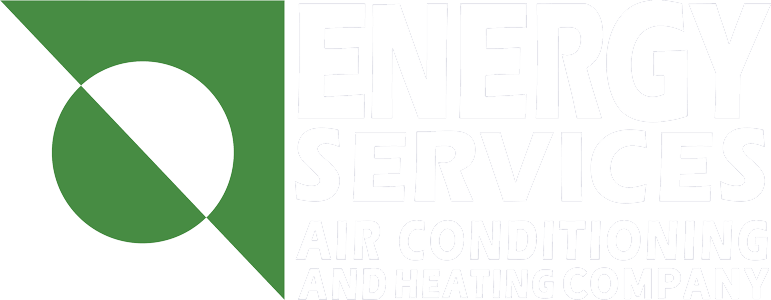Understanding When Furnace Replacement Becomes Essential
Furnace replacement in Geneva, IL represents one of the most significant home comfort investments you’ll make, and recognizing the right time for this upgrade can save thousands in energy costs while ensuring your family stays warm throughout harsh Midwest winters. At Energy Services Air Conditioning and Heating Company, we’ve observed that most furnaces in the Geneva area last between fifteen and twenty years, though this lifespan varies considerably based on maintenance history, usage patterns, and the quality of the original installation. When your heating system begins requiring frequent repairs, especially if those repairs exceed fifty percent of a new system’s cost, replacement often becomes the more economical choice.
The climate conditions specific to Geneva, with winter temperatures regularly dropping below freezing and occasional polar vortex events bringing subzero conditions, place extraordinary demands on residential heating systems. Your furnace works harder here than in milder climates, cycling more frequently and running longer to maintain comfortable indoor temperatures. This increased workload accelerates wear on critical components like heat exchangers, blower motors, and control boards. Additionally, older furnaces operating at sixty to seventy percent efficiency waste substantial energy compared to modern units achieving ninety-five percent or higher Annual Fuel Utilization Efficiency ratings, translating directly into higher monthly heating bills during those long winter months from November through March.
Modern Furnace Technology and Efficiency Standards
Today’s furnace technology has evolved dramatically from systems installed even a decade ago, incorporating advanced features that enhance both comfort and efficiency. Variable-speed blower motors adjust airflow based on heating demands, eliminating the temperature swings common with single-speed systems while reducing electrical consumption by up to seventy percent. Two-stage and modulating gas valves provide precise temperature control, allowing furnaces to operate at lower capacities most of the time, which reduces wear, minimizes noise, and improves humidity control. These technological advances mean that replacing an aging furnace doesn’t just restore reliable heating but significantly upgrades your home’s comfort system.
Energy Services Air Conditioning and Heating Company specializes in installing high-efficiency furnaces that meet or exceed current Department of Energy standards, which require minimum AFUE ratings of ninety percent for gas furnaces in northern climates. We’re proud to provide the best in HVAC and indoor air quality services to residential customers throughout Chicago and the surrounding communities, and our expertise with leading manufacturers ensures proper sizing and installation for optimal performance. Modern furnaces also incorporate sophisticated diagnostic systems that alert homeowners to potential issues before complete failure occurs, enabling preventive maintenance that extends equipment life and prevents emergency breakdowns during extreme weather events.
The Comprehensive Replacement Process
Furnace replacement involves considerably more than simply swapping old equipment for new, requiring careful evaluation of your home’s heating requirements, existing ductwork condition, and potential efficiency improvements. Our process begins with a thorough load calculation using industry-standard Manual J methodology, accounting for your home’s square footage, insulation levels, window specifications, and directional exposure to determine precise heating capacity requirements. This scientific approach prevents the common mistake of installing oversized equipment that cycles frequently, creates uncomfortable temperature variations, and experiences premature component failure.
During the evaluation phase, we inspect existing ductwork for leaks, restrictions, or sizing issues that could compromise new furnace performance. Studies indicate that typical duct systems lose twenty to thirty percent of heated air through leaks and poor connections, meaning even the most efficient furnace cannot deliver optimal comfort without properly sealed and insulated ductwork. We also assess your current ventilation system, as modern high-efficiency furnaces require different venting configurations than older models, often necessitating new PVC exhaust pipes and fresh air intake provisions to ensure safe, efficient operation.
Investment Considerations and Long-Term Value
While furnace replacement requires substantial upfront investment, typically ranging from three thousand to eight thousand dollars depending on system capacity and efficiency level, the long-term financial benefits often justify this expense through reduced energy consumption and eliminated repair costs. High-efficiency furnaces can reduce heating costs by thirty to forty percent compared to older models, with Geneva homeowners potentially saving six hundred to twelve hundred dollars annually on heating bills. Whether you need to find the right HVAC system for a new home or want to have maintenance completed on your current system, you can count on us to provide transparent pricing and detailed efficiency calculations demonstrating expected return on investment.
Key Indicators That Replacement Is Necessary
Several warning signs indicate your furnace has reached the end of its serviceable life and requires replacement rather than continued repairs. These critical indicators help homeowners make informed decisions about when to invest in new heating equipment:
- Age exceeding fifteen years: furnaces beyond this threshold typically operate inefficiently and lack modern safety features
- Rising energy bills: steady increases despite consistent usage patterns indicate declining efficiency
- Uneven heating: rooms remaining cold while others overheat suggests failing components or improper sizing
- Excessive noise: banging, rattling, or squealing sounds often signal imminent component failure
- Frequent cycling: systems turning on and off repeatedly indicate control problems or heat exchanger issues
- Yellow pilot light: this dangerous condition suggests incomplete combustion producing carbon monoxide
- Excessive dust or dry air: deteriorating systems struggle to maintain proper humidity and filtration
Selection Criteria for Your New Furnace
Choosing the right replacement furnace requires balancing multiple factors including efficiency ratings, capacity requirements, feature preferences, and budget constraints. AFUE ratings directly impact operating costs, with each percentage point improvement potentially saving hundreds of dollars over the system’s lifetime. However, the highest efficiency models may not provide optimal value depending on your specific circumstances, such as plans to relocate within several years or limited usage in vacation properties. We help analyze these variables to identify the sweet spot where efficiency gains justify additional investment.
Proper sizing remains absolutely critical for achieving advertised efficiency levels and maintaining comfortable conditions throughout your Geneva home. Oversized furnaces create uncomfortable temperature swings, increase humidity problems during shoulder seasons, and experience premature heat exchanger failure from rapid cycling. Conversely, undersized systems run continuously during extreme cold, failing to maintain setpoint temperatures while consuming excessive energy. Our detailed load calculations ensure your new furnace precisely matches your home’s heating requirements, delivering optimal comfort and efficiency regardless of outdoor conditions, from mild autumn days to the depths of January cold snaps that characterize Geneva winters.










